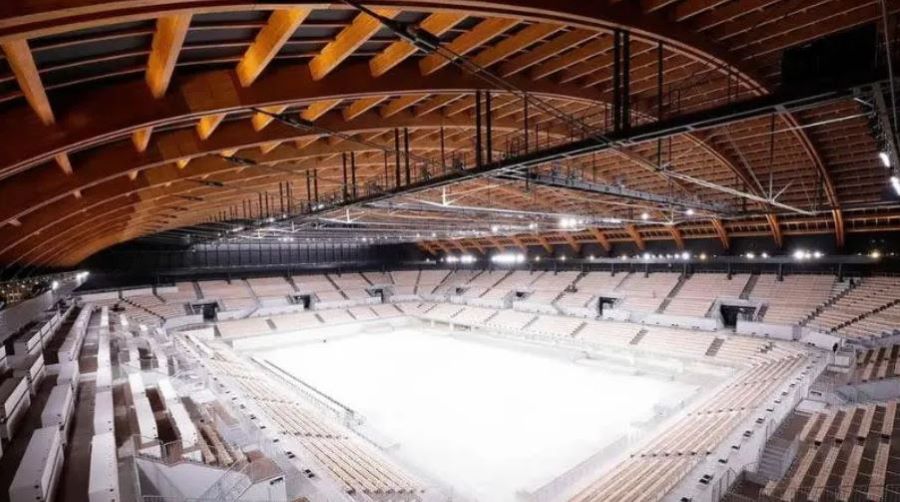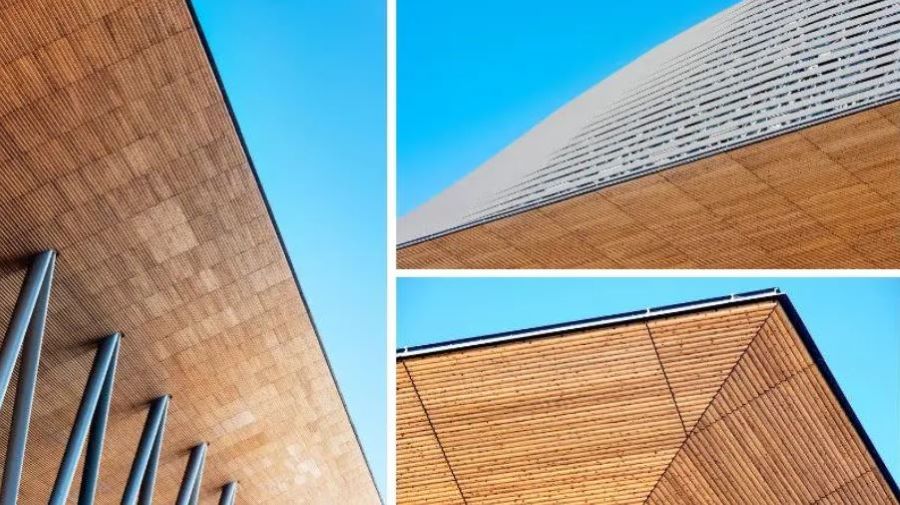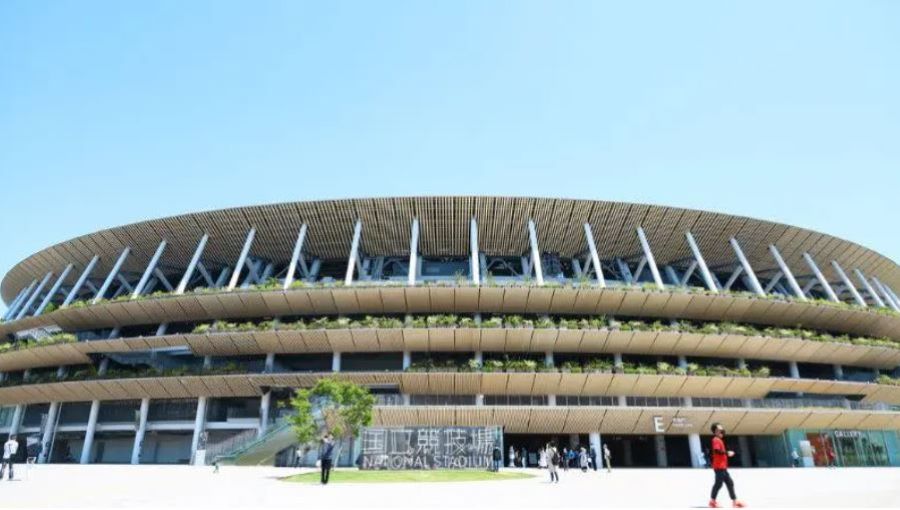Could this be the golden opportunity Brisbane’s sporting fans have been waiting for to reclaim their sacred patch of green on the sidelines?
Imagine the triumphant and no doubt raucous return of the Gabba Hill as the best athletes on the planet gather for the 2032 Olympic Games at a newly rebuilt stadium.
On the western side of the century-old sporting cauldron, the famed Hill was replaced by concrete and plastic seats with its redevelopment in the late 1990s.
Lost to progress, so too—many have argued—was much of the soul of the Woolloongabba grounds.
So, what’s the chance of an Olympic resurrection of the Hill?
Well, it seems at least from a design perspective nothing is off the table at the moment but the clock is ticking.
And with Brisbane committed to delivering the greenest and first “climate positive” Olympics, there is a mountain of uncharted territory to climb to achieve what will be a benchmark not only for future Games but development across the globe.
Climate positive—also referred to as carbon positive—is the concept of going beyond achieving net zero carbon emissions to removing more greenhouse gases from the atmosphere than you create.

In 2020, a year before Brisbane won the right to host the 2032 Games, the International Olympic Committee decided the summer and winter Olympics would be climate positive from 2030 onwards.
“Climate change is a challenge of unprecedented proportions, and it requires an unprecedented response,” IOC president Thomas Bach said at the time.
“Looking ahead, we want to do more than reducing and compensating our own impact. We want to ensure that, in sport, we are at the forefront of the global efforts to address climate change and leave a tangible, positive legacy for the planet.”
To put the challenge for Brisbane—the first Olympic climate positive out of the blocks—in context, the overall carbon footprint of the 2012 London Olympics was 3.3 million tonnes of carbon dioxide.
And for the 2024 Olympics, this figure will be slashed by half with Paris setting itself a target to not exceed 1.5 million tonnes of carbon emissions. To do this, it is limiting its construction footprint by using existing or temporary venues for 95 per cent of the infrastructure required and renewable power sources as well as controversially not installing air conditioning in the Olympic athletes’ village.
Meanwhile, Los Angeles is planning to stage 100 per cent of the 2028 Games in reused or adapted buildings.
“We’ve got to do something extraordinary to get it to be a [carbon] positive figure,” says Brisbane-based architect and Buchan principal Phil Schoutrop. “But if we can get there, how brilliant will it be for Brisbane to say we did and we’re the benchmark.”
Collaboration, timber—lots of it—and “creating a vibe” will be key to the success of delivering the ambitious goal of a climate positive Olympics and leaving a lasting legacy for future generations, he says.
Along with US-based architecture firm HKS—best known for designing the Dallas Cowboys’ AT&T Stadium, one of the world’s biggest sporting venues—and Tokyo-based studio Nikken Sekkei, Buchan this week hosted an industry talkfest, Creating a Legacy: Brisbane Olympics 2032.
“I know some people would say that one architect in the room is enough and two or three is probably like torture,” Schoutrop quips. “But in this situation … there’s no one practice in the world that can deal with all the issues.
“We need partnerships across the industry to realise all of this.
“And to understand what the legacy is that we want to create we need to be thinking 10 years beyond the Olympics … and about how we design these spaces that we’re about to create to be relevant to a whole new group of Queenslanders and visitors to Queensland.”
HKS Australia and New Zealand director Andrew Colling agrees.
“We need to be thinking about where we want our city to be in 2042. And if we start there, we can then work backwards.
“Being climate positive is a big transition where our business model, our operating model, our behaviour, how we build, how we use facilities, and how we as businesses work with each other shifts.
“We’re a lot more conscious about our impact on the environment. It’s no longer just a matter of not putting any carbon in the atmosphere .. it’s taking carbon out of the atmosphere and that involves a new series of technology that’s going to evolve over the next 10 to 20 years. It’s a big step.”
Colling says timber—with the lowest embodied carbon of all mainstream building materials—was likely to play a big part in the climate positive strategy for the Brisbane Olympics.
“I think that’s going to be the big shift—timber venues for arenas and stadiums. We’ve got the right climate for it, it’s probably the right direction.”
A timber Gabba?

“If it goes down that path, it will be among the most unique stadiums in the world,” he says “And it would distinguish Brisbane and Queensland not only from the rest of Australia, but on a global stage.”
Schoutrop says the city’s beloved Queenslander homes with their wide timber verandas make it a natural fit.
“Well, we love our Queenslanders and that’s all about timber. Growing up in and around timber homes, we have a natural affinty with it and so having a timber stadium would probably work for Queensland.”
According to Nikken Sekkei’s Hiroshi Miyakawa, hosting the Olympics is a chance for Queensand to “present its difference” through design to the world.
“Because all the world is watching, and also many visitors are coming, so it is a good opportunity to present your own culture,” he says.
Miyakawa was the principal architect behind the Ariake Gymnastics Centre for the 2020 Tokyo Olympics.
The centre boasts one of the world’s largest timber roofs, spanning 90m, and was designed as a temporary Olympics venue with removable stands to allow its transformation into a permanent exhibition hall.
Miyakawa describes it as a “simple translation of the past” inspired by traditional Japanese architecture, in particular its large-roofed timber temples, some of which have stood for hundreds of years.

He says perhaps Brisbane’s greatest challenge in achieving a climate positive Olympics will be the IOC’s own regulations as well as the broadcasting requirements that demand controlled environments within the Olympic venues.
“Basically the stadium is a closed box because we have to provide perfect, equal conditions. So, no sunshine, no natural ventilation … just artificial light and air-conditioning.”
But he says times are changing and because of Brisbane’s “really nice weather” maybe there was opportunity for more of the events at the 2032 Games to be staged in open-air venues.
Indoors or outdoors, Miyakawa believes “the architecture itself should be a backdrop and the athletes and people the main actors”.
Schoutrop and Colling say the design of the Olympic venues is important but agree that will not be the mark of success for the Brisbane Games.
“It’s actually the places that we create that sit in-between the venues that will create the experiences for people … and the success of the Olympics will be tested by how well-connected those places and precincts are,” Schoutrop says.
“I want to see it take Brisbane past Sydney and Melbourne to be the most liveable city in Oceania. We’ve got a bit to do but the Games should get us there.
“And I think creating that vibe that we have as people from southeast Queensland can be really captured when we think outside the box.”
Colling adds: “You know, as architects, we want to create beautiful, functional buildings. But to me, if we can create buildings that work with the environment, and actually encourage nature back into the environment, that to me is the exciting part.
“That might mean our stadiums are a series of open verandas that have rainforests in them, or it might mean that their roofs are actually gardens that we can walk around.”
Or if we really want to add some Queensland vibe and a patch of carbon positive greenery, bring back the Gabba Hill.
Article source: www.theurbandeveloper.com
